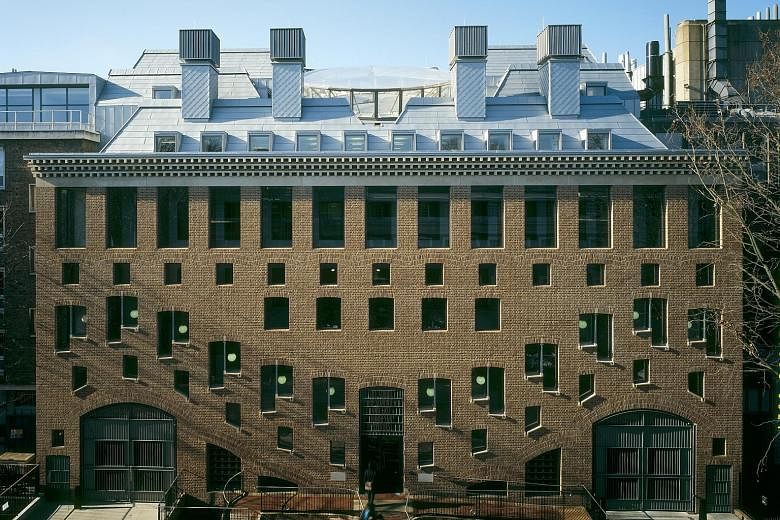With Singapore being an air-conditioned nation, it is common for people to run into a mall or building for a respite from the sweltering heat outside.
So it would be hard-pressed to find a building in Singapore that does not have air-conditioning. And the same can be said for most modern, international cities.
Indeed, the advent of the air- conditioner - the first modern air-conditioning system was invented in 1902 by New York engineer Willis Carrier - has given rise to large complexes and soaring skyscrapers, wrapped in glass and steel with glazed facades, creating an artificially cooled climate indoors.
But the heavy use of air-conditioning in buildings has fuelled today's energy and environmental crisis.
And that is not cool with University of Cambridge's professor of architecture Alan Short, who believes an overhaul of the architecture industry is necessary to avoid a full-blown environmental crisis. He also hopes architects can draw on lessons from old features in naturally ventilated buildings constructed in the 19th and early 20th centuries.
His views are captured in his book, The Recovery Of Natural Environments In Architecture: Air, Comfort And Climate - the culmination of 30 years of research and award-winning green building design by him and his colleagues at Cambridge.
Speaking to The Straits Times over the telephone from the university, Prof Short, 62, does not mince his words when he talks about the current "crisis" of architecture.
"This design fetish for being inside glass, steel and air-conditioned skyscrapers has infected the corporate world internationally," he says.
"Modern buildings cannot survive unless architects hardwire them to an air-conditioner. It's much like a life-support machine for the building."
The 378-page book, which was published earlier this year, delves into the history of how buildings such as multi-storey offices in urban locations, theatres, hospitals and schools were designed.
These old buildings have well- placed airwells and high ceilings and circulate fresh air through ventilation systems. Early skyscrapers in American cities such as Chicago and New York did not have glass facades and were not completely air-conditioned, says Prof Short, who runs architecture firm Short and Associates Architects.
Back then, he says, designers and clients knew they "could induce large air flow in their buildings simply by exploiting natural temperatures and pressure differences".
One example of such a building is the Monadnock Building in Chicago, which was completed in 1891 with 17 floors.
Prof Short, who also runs an inter- disciplinary research group that looks at low-energy building design, says building developers and society have bought into the idea that air-conditioning is a must-have - a mark of how civilised a society is.
Highlighting early advertisements that marketed air-conditioners aggressively, he says: "People were constantly told they had to refrigerate the environment or that only inferior societies live in hotter climates.
"A lot of people were pushed into that idea that contributed to the horror of being hot. It's complete nonsense and an idea that has carried on till today."
Weaning buildings off air-conditioning can be done and Prof Short himself has proven so.
At his firm, then known as Short Ford Associates, he and a team designed the brick-clad Queens Building at De Montfort University in Leicester, England. Completed in 1993, the building is naturally ventilated, passively cooled and naturally lit. It has only one air-conditioned room, a small laboratory.
The four-storey building, which can hold up to 2,000 staff and students, was awarded the Royal Institute of British Architects' (Riba) Education Building of the Year in 1995. It was, at that time, the largest naturally ventilated building in Europe .
Another successful project was the School of Slavonic and East European Studies, which is part of University College London.
The seven-storey building is a passive downdraught-cooled public building and features a large lightwell at its centre and exhaust stacks that move air into and through the building.
Prof Short, who won the first Riba President's Award for Outstanding Practice-located Research in 2007, hopes that architects will look at greener ways of building big structures.
"Something can be done. I'm optimistic about the young generation of architects, who might look into changing what's happening now. The fashion will pass."
• The Recovery Of Natural Environments In Architecture: Air, Comfort And Climate (£43.99 or S$76.70) is sold at www.routledge.com



